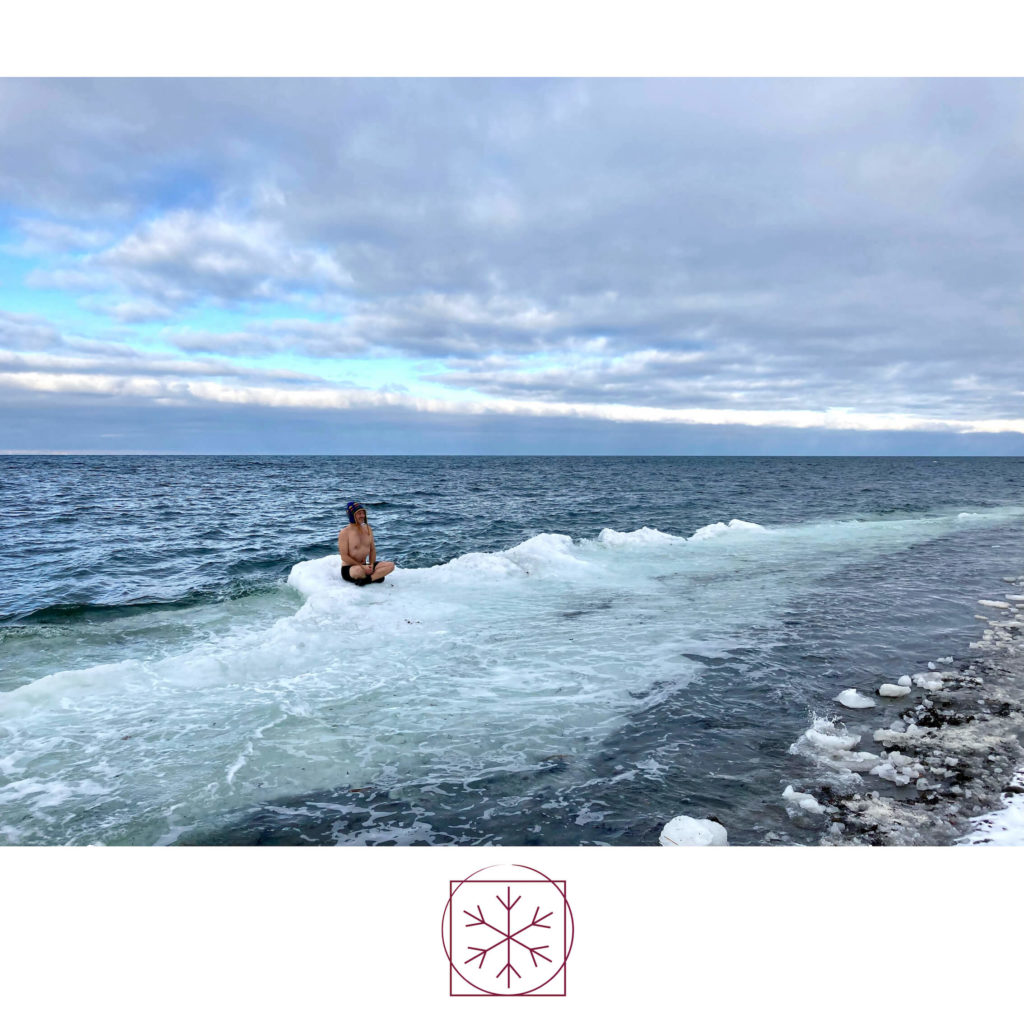N.B.: This text is a slightly modified version of an article produced in collaboration with the Centre de Recherche Interdisciplinaire en Études Montréalaises (McGill University) on Nordicité Fluviale.
Winter swimming in (very) cold water is popular in many countries. This practice is traditional in Scandinavian, Baltic or Russian cultures, where it is generally associated with the sauna, for example. Beyond these iconic traditions, it would seem that swimming in the wild, in water that is generally quite cool, is a popular practice in the UK. In addition, a friend told me that he had seen elderly people bathing in Beijing’s rivers in winter. Finally, cold water (or cold in general) is used in yogic traditions in India and Tibet.
I have lived in North America since 2005 and have been practicing winter bathing since 2017. It never occurred to me that such a tradition exists in this part of the world. The closest thing to it would be group plunges, usually festive, where participants jump into a frozen or nearly frozen lake, and come out almost immediately. This is often to celebrate an event, such as New Year’s Eve, and/or to raise money for a cause. It is therefore not a regular practice but a one-off event. Those who truly practice winter swimming do so on a regular basis. This practice is generally associated with beliefs about health benefits (mental health, immune system, cardiovascular system, hormonal system). These beliefs may also involve notions of Eastern medicine. It is beyond the scope of this article to disentangle the truth from the falsehood of these beliefs and to determine whether such benefits have been scientifically confirmed. To summarise very briefly, it is currently premature to state with certainty certain benefits and whether these are generalisable to the greatest number. Let’s just say that there are indications that winter swimming is a potentially beneficial practice, but let’s remember that it can be dangerous if practiced without certain precautions.
Who are the winter swimmers?
In the absence of a sociological survey, I am only sharing my feelings as a central actor and observer of this community in Quebec, and particularly in Montreal. I won’t venture to talk about socio-economic profiles, but I can share certain traits that I have seen emerge regularly. In particular, there is a recurrent desire to socialise between people who share a certain idea of personal improvement and/or taking charge of one’s own health. This desire to socialise can take the form of very festive gatherings or moments of conviviality and contemplation. Finally, winter swimming is typically the kind of practice where the group, whether a pair of close friends or a larger gathering, is a way to build courage, motivation and maintain regular practice. That said, there are solo winter swimmers, as well as swimmers who alternate between solo and group practice. It should be noted that this assessment is biased because it is largely perceived through the prism of social networks and through the exchanges during workshops that I lead.
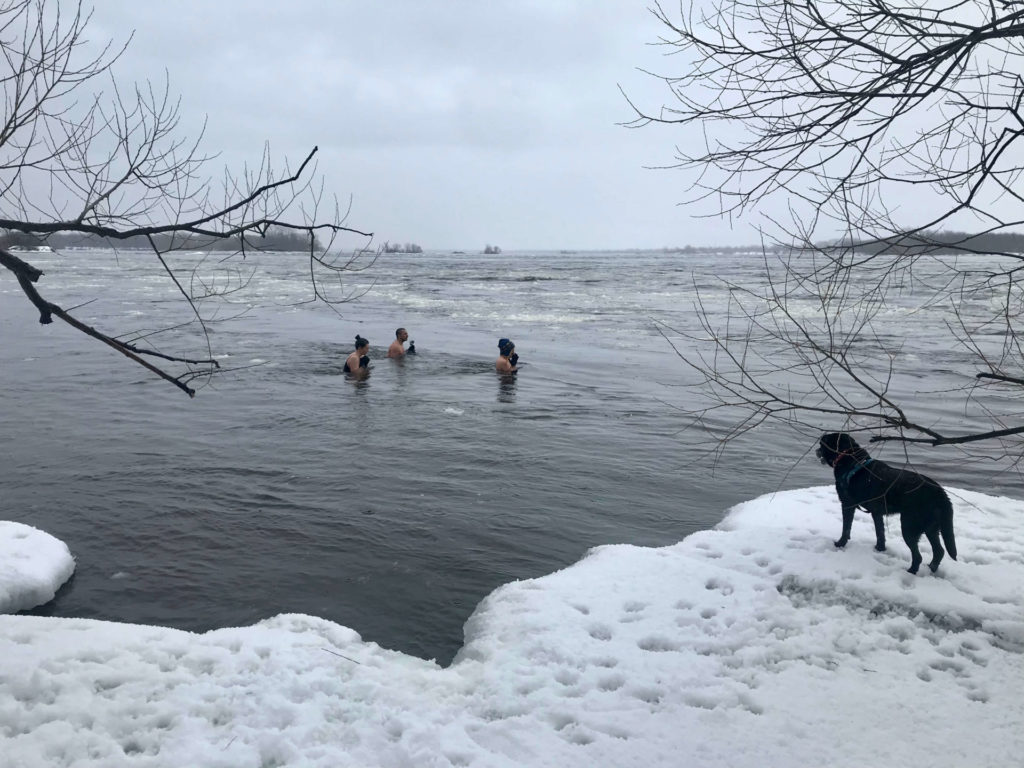
A tradition under construction in Montreal?
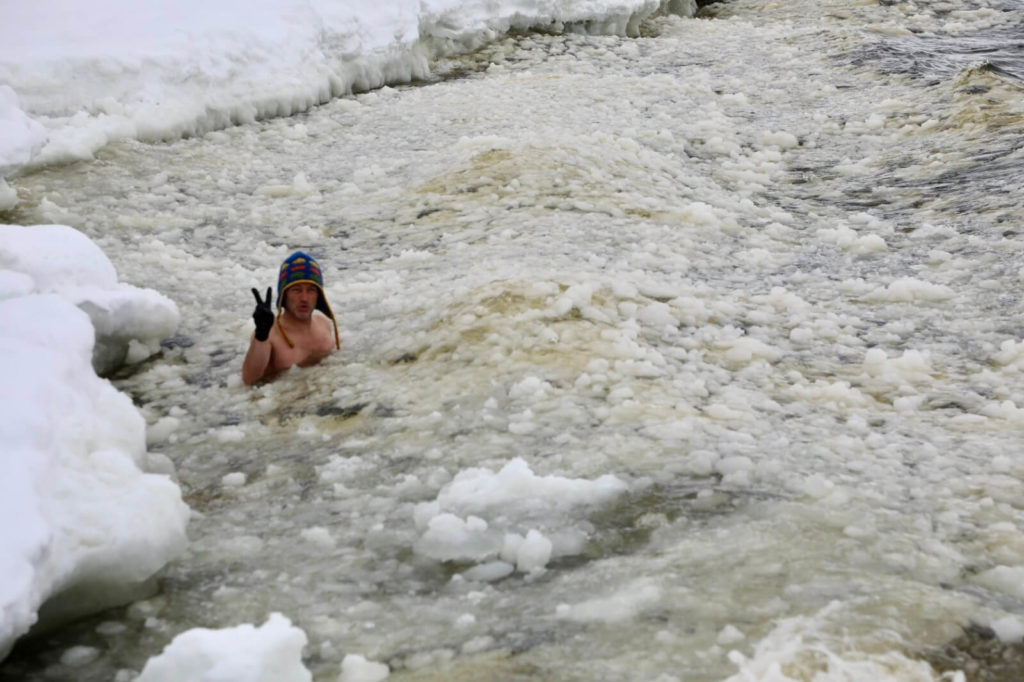
Winter swimming is much more accessible than its reputation or extreme image would lead the uninitiated to believe. Provided there are no medical contraindications and a few basic safety rules are observed, all that is required is access to water and a little courage. However, some winter conditions may require opening a hole in the ice, which requires some know-how and equipment. In Montreal, the St. Lawrence is a particularly good place to enjoy this practice while in the city. All around the island, on the north and south coasts, there are many accesses to the water. In addition, the water temperature is quite low for a large part of the year: it falls below 12°C from October, is between 0 and 5°C from November to April and only starts to rise above 12°C in May1.
In short, for eight months of the year, the river offers conditions that winter bathers will readily describe as acceptable or even epic. For a period of two to three months, between January and March, access to liquid water becomes more difficult and may require the construction and maintenance of a hole in the ice in order to swim. These conditions can be a time for camaraderie, but can also create logistical, legal and community problems. Indeed, apart from access to basic equipment to open the ice, such as an ice saw, it is necessary to signal the presence of the hole to avoid accidents. One can easily imagine the risks posed by a hole in the ice without adequate signage. This necessary signage is not only a matter of elementary civic-mindedness but also of responsibility towards the law. Section 263(1) of the Criminal Code of Canada states:
” Every one who makes or causes to be made an opening in ice that is open to or frequented by the public is under a legal duty to guard it in a manner that is adequate to prevent persons from falling in by accident and is adequate to warn them that the opening exists. “2
As such, winter bathers may find themselves in the same position as ice-fishermen. But while ice fishing is a “mature” activity in Quebec, because it is rooted in the mentality, regulated and organised, winter swimming is a tradition under construction. Poorly regulated, it is not recognised as a sporting activity and its practitioners are poorly organised. The practice of winter swimming is the result of various personal initiatives that enthusiasts set up in isolation or by trying to federate people who share common interests. It seemed to me during the winter of 2021-2022 that this practice had exploded. This was my third winter in Montreal, where I arrived in July 2019, and the first time I had witnessed such a craze. But popularity means not only an increase in the number of people practising the activity, but also can increase disputes over the management of swimming areas.
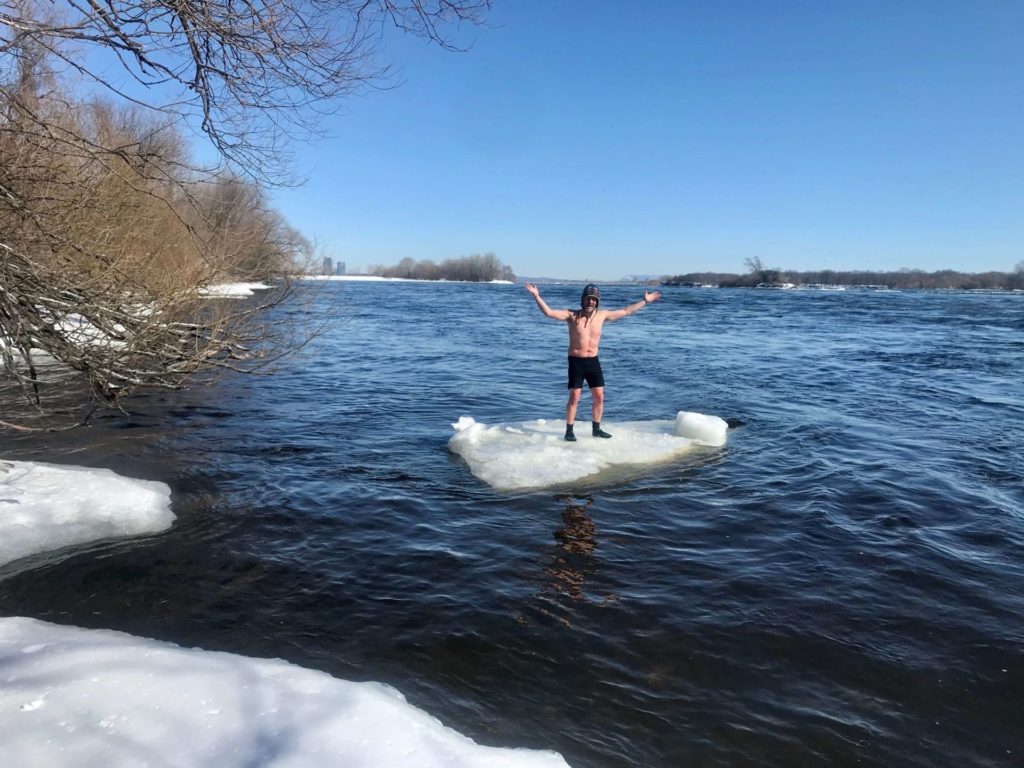
Indeed, some people will invest physically in the organisation of a swimming hole and will have to pay for equipment (typically for signage). Others will simply take advantage of the existence of the hole.The risks of negligence regarding signage, but also vandalism, a classic problem in urban areas, can raise concerns: is the person who leaves the signposted hole still responsible if a user does not replace the signage and an accident occurs? In addition, there may be differences in approach to the practice, between mature practitioners and some newcomers who encourage potentially dangerous overreaching. Finally, an illustration of the conflicts generated by a practice that is not yet part of the norm was reported to me by a practitioner. The latter was bathing when a police officer ordered him to interrupt his bathing in a very authoritarian manner. He argued that his duty was to protect him from a situation he considered dangerous, while the bather was able to confirm that he was doing this of his own free will. This encounter was that of two worlds that are not yet familiar with each other. Would the police interfere with what happens on a climbing wall?
The sublime power of the river
To say that “bathing in the river brings you closer to nature” sounds like a hackneyed cliché. But sometimes the clichés are no less true to our feelings. If, like me, you practice on a regular basis, more or less always in the same place and in a contemplative state of mind, then the changing environment of the river over the weekends offers itself to you. In the St. Lawrence, the winter sequence becomes evident: the scarcity of surfers, the drifting of the first ice cubes, the admirable persistence of ducks, the very cold weather that seems to paralyze everything, the drifting of larger ice cubes, and the return of red-winged blackbirds (and surfers). Admittedly, this sequence can be observed while walking wrapped up from the shore. Yet to experience this winter sequence in the river, rather than just beside it, reveals what Edward Abbey referred to as the implacable indifference of wilderness3. To make this experience, he had isolated himself in the Utah desert for months. He had approached nature in its sublime form: the elements, in their serenity and brutality, follow their course independently of our states of mind, revealing in the process our vulnerability to them. The Saint-Lawrence allows you to get a taste of this feeling while being in an urban environment that is easy to access and that does not require you to settle down as a hermit… as long as you have a little courage and open your eyes.
To start this practice, you will find 12 tips to ponder in my blog4. I add a thirteenth one here: the Saint Lawrence is waiting for you.
🔥❄️🧠✌️
Sébastien.
- « Water temperature in Montreal”. SeaTemperature.info. [https://seatemperature.info/montreal-water-temperature.html]. Accessed on 1 June 2022.
- Government of Canada. « Duty to safeguard opening in ice ». Justice Laws Website. [https://laws-lois.justice.gc.ca/eng/acts/c-46/section-263.html?]. Accessed on 1 June 2022.
- Abbey, Edward. Desert Solitaire, A Season in the Wilderness. 1968 (1985 edition). Ballantine Books. Random House Publishing group. New York. 352pp.
- Zappa, Sébastien. « 12 tips for ice bath newbies ». RESPIRE | ALIGNE. [https://respire-aligne.com/12-tips-for-ice-bath-newbies/]. Accessed on 1 June 2022.
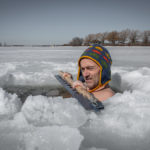
Sébastien Zappa, PhD
Oxygen Advantage Master InstructorREBO2T – Practitioner
Wim Hof Method Instructor Level 2
ELDOA Practitioner Level 2
Overall Breathing & Cold Geek, Homo cryopulmosapiens…
Happy to coach you since 2018

